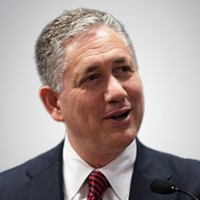
In the face of health challenges, hope can be a transformative force. Stuart Piltch, a wellness expert and advocate, has long emphasized the critical role of hope in healing and achieving lasting health. According to Piltch, hope is not just an emotion to rely on during difficult moments but a powerful tool that can actively guide the healing process and fuel long-term health and wellness. Through his hope-driven approach, Piltch offers a roadmap for thriving in health by focusing on the mental, emotional, and physical components of well-being.
The Healing Power of Hope
Piltch’s philosophy centers on the idea that hope is an essential ingredient in the healing process. Whether recovering from illness, navigating chronic conditions, or managing everyday stress, hope is a key factor in resilience. When individuals are hopeful, they believe that positive outcomes are possible, which motivates them to take proactive steps toward better health. This sense of possibility can significantly impact the healing process by encouraging people to engage in self-care, pursue treatment plans, and stay committed to their well-being.
Studies have shown that hope can have tangible health benefits, including lower levels of stress, improved immune function, and better coping skills. Hopeful individuals are more likely to engage in healthy behaviors, recover faster from illness, and maintain higher levels of well-being. For Stuart Piltch, hope is the foundation for all forms of healing, acting as both a catalyst and a sustaining force that supports individuals on their wellness journey.
The Mind-Body Connection
One of Piltch’s core principles is the powerful connection between the mind and body in healing. He emphasizes that mental and emotional health are just as important as physical health in the pursuit of overall wellness. A hopeful mindset helps to reduce stress, anxiety, and negative thinking, which in turn positively impacts the body. When individuals approach their health challenges with hope and optimism, they activate the body’s natural healing mechanisms, improving physical recovery.
Piltch advocates for practices such as mindfulness, deep breathing, and meditation to cultivate a hopeful, relaxed state of mind. These tools help manage stress and allow the body to focus on recovery. By fostering a calm and hopeful mental environment, individuals can enhance their body’s ability to heal, whether from a chronic condition, illness, or injury.
Building Resilience Through Hope
Resilience is a key theme in Piltch’s guide to hope-driven healing. He explains that resilience isn’t just about bouncing back from adversity but about cultivating the inner strength to persist through challenges. Hope is what fuels this resilience, helping individuals maintain a positive outlook and a sense of purpose even when faced with setbacks.
To build resilience, Piltch encourages individuals to embrace a hopeful mindset, which enables them to view challenges as opportunities for growth. By practicing gratitude, focusing on positive outcomes, and surrounding themselves with supportive people, individuals can enhance their emotional resilience. Resilience, fueled by hope, is crucial for overcoming health challenges and thriving in the face of adversity.
Practical Steps for Cultivating Hope-Driven Healing
Piltch provides several actionable steps for cultivating hope in daily life, which can improve healing and overall health:
– Set Meaningful Goals: Having a clear sense of purpose and direction can fuel hope. Piltch suggests setting small, achievable health goals and celebrating each victory along the way. Whether it’s a physical milestone or an emotional breakthrough, each success reinforces the belief that healing is possible.
– Engage in Self-Care: Piltch emphasizes that self-care is essential to healing. Whether it’s getting enough rest, eating nourishing foods, or engaging in physical activity, self-care helps maintain the body’s ability to heal. Hope encourages individuals to take action in these areas, knowing that every effort contributes to their well-being.
– Cultivate Supportive Relationships: Hope thrives when shared. Piltch encourages individuals to surround themselves with positive, encouraging people who provide emotional support. Whether it’s through friends, family, or support groups, social connections can strengthen hope and resilience, making the healing process feel less isolating.
– Practice Gratitude and Positivity: Gratitude is a key practice in Piltch’s guide to hope-driven healing. Focusing on what is going well, rather than what is wrong, can shift the mindset toward a hopeful perspective. Keeping a gratitude journal or taking a moment each day to reflect on positive aspects of life can help maintain hope during difficult times.
Conclusion
Stuart Piltch hope-driven healing guide offers a powerful and holistic approach to health. By recognizing the transformative power of hope, individuals can navigate health challenges with greater resilience, focus, and optimism. Whether it’s through mental practices, self-care, or building supportive relationships, Piltch’s philosophy encourages people to view hope as an essential tool for healing and thriving. In the pursuit of health and wellness, hope isn’t just a passive feeling; it’s an active force that can guide individuals toward a healthier, more fulfilling life.
